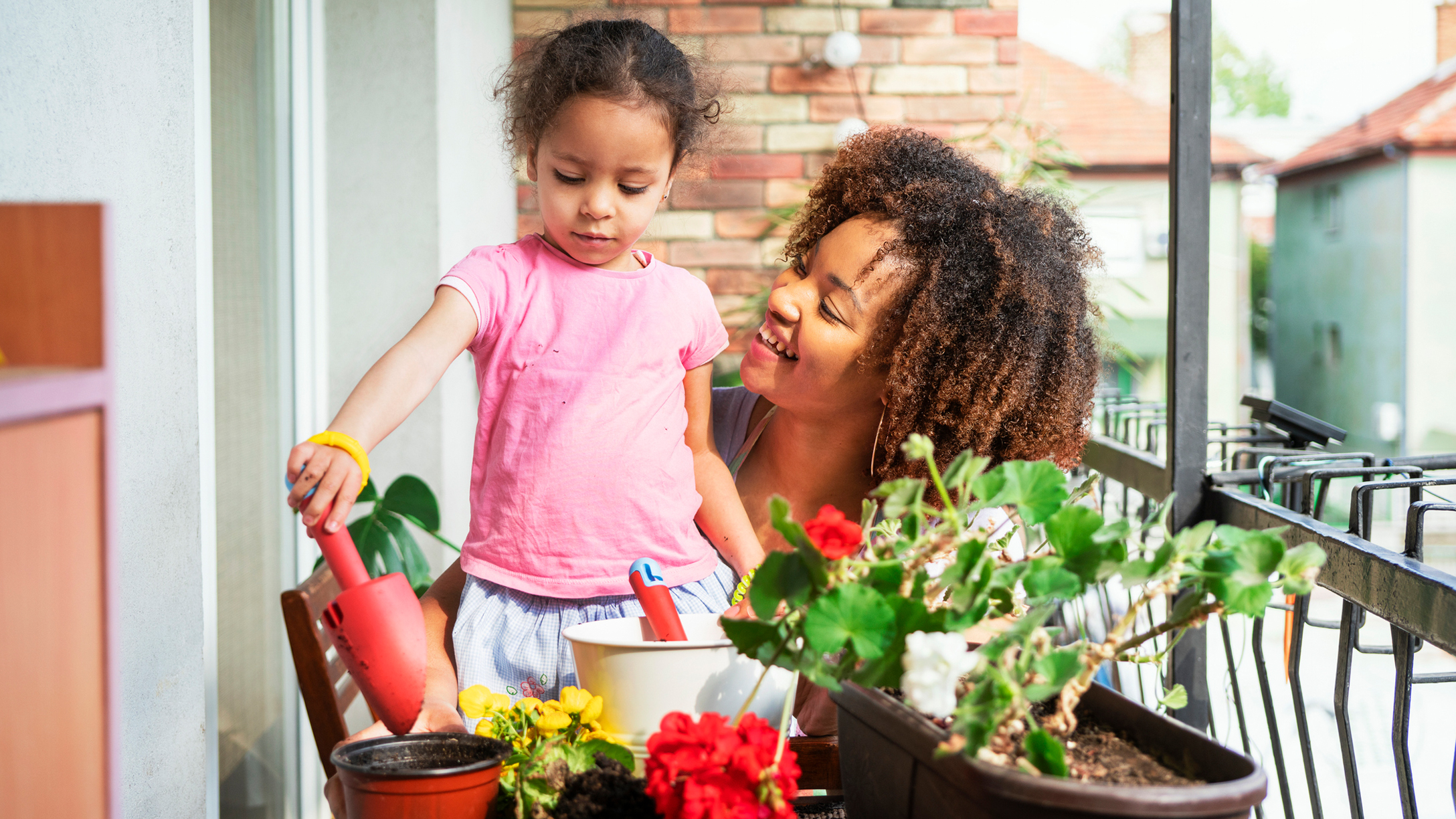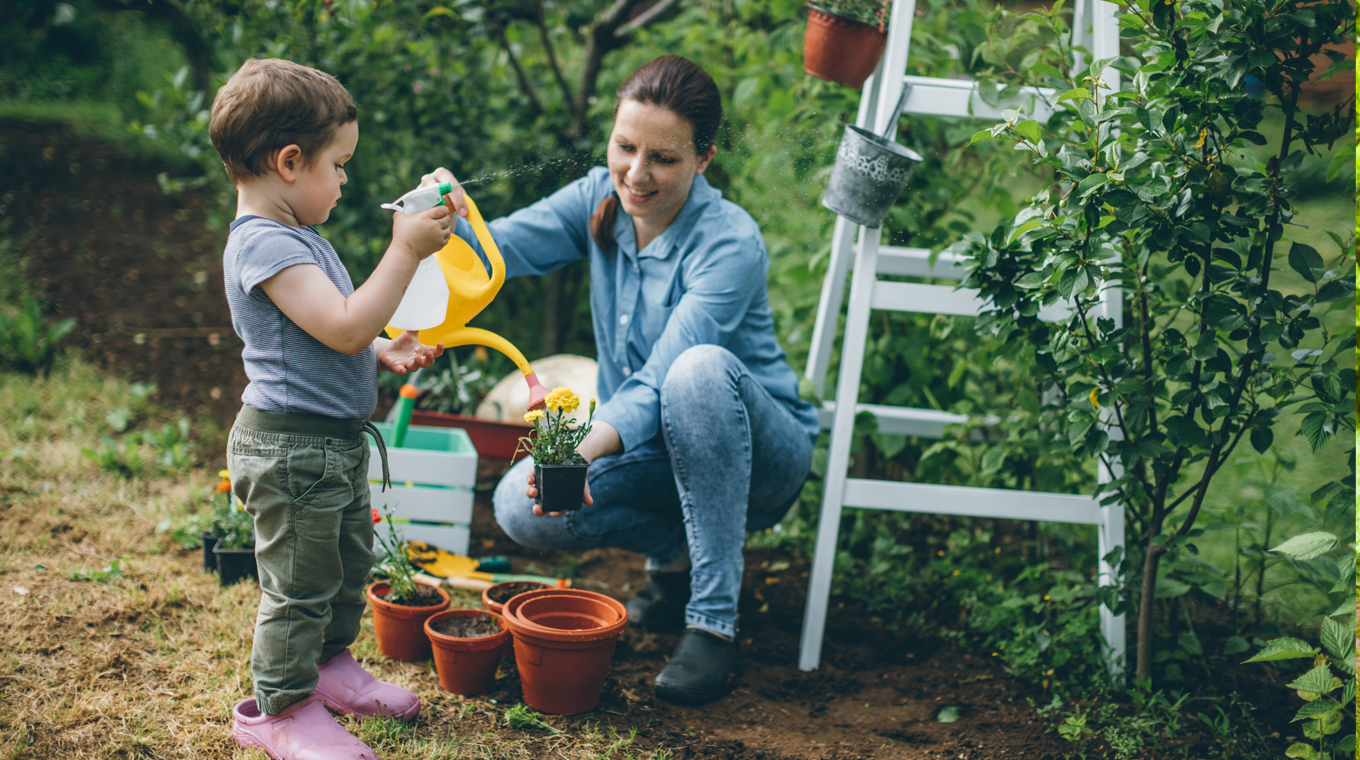
In this article
With spring comes fresh blooms of beautiful tulips and roses — it's a great time to enjoy your outdoor spaces. Some beautiful spring flowers need to be planted before the winter frost, while others are easy additions to the warm sunfilled garden. Planting the right flowers at the right time will help guarantee a bounty of color and fragrance for your spring afternoons on the porch.
Los Angeles mom Laura Ortiz likes to involve her kids in the gardening but expectations can sometimes be hard to set. “We planted Easter lilies and they wanted to see them the next day," she told Mom.com. "After weeks, there were pleasantly surprised when they started to see them grow.”
Spring flowers to plant

So, what are the best flowers for your spring garden? It seems that there is an endless list of options, depending on where you live and what the climate is like. Those in more temperate climates will have more flexibility on when they can plant.
Here are 8 spring flowers to have in your garden:
1. Tulips: A resilient spring plant that sprouts one long stem with a single hearty flower on the top. Tulips come in many colors and easily add a fresh look of spring to any garden.
2. Dahlias: Part of the daisy family, this rounded flower comes in single and double flowers in a multitude of colors to splash your garden with vibrant pinks, purples, and reds.
3. Gladiolus: This is a type of iris with spikes of flowers surrounded by sword-shaped leaves. The strong stem holds entire sprays of flowers that come in almost any color imaginable including white, yellow, violet, red, and pink.
4. Daffodils: Known for their trumpet-like center, these yellow bulbous plants can fill gardens with sunshine on the ground. The daffodil may also be found by the name narcissus.
5. Peony: Peonies are a flowering shrub that comes in many assortments of color and even style. The messy petal arrangement opens to an anemone-like center. Some have rose or lemon scents, while others are scentless.
6. Bee balm: Perfect for a pollinator garden, bee balm attracts bees, butterflies, and birds. Make sure bee balm has enough space for air circulation to keep it healthy, planting it up to 24 inches apart in well-draining soil.
7. Baptisia: Also known as blue indigo, baptisia has long sprigs with delicate rounded deep violet and blue petals. This plant was originally used as a blue dye.
8. Allium: If you want an edible garden, alliums are a perfect addition. Alliums include onion, garlic, scallions, shallots, and leeks.
When to plant spring flowers

Planting your spring flowers really depends on the type of flowers you want in your garden, as well as the USDA agriculture zones</a>; zones determine the hardiness of certain plans to withstand certain climates, such as extreme cold or extreme summer heat. You’ll want to check your zone map to make sure you are planting the right items at the right time of the year, depending on where you live.
Here are some guidelines of when to plant common types of flower across a variety of zones:
- Bulbs: Spring-blooming bulbs are planted in the fall around September or October. These include tulips and daffodils. Summer-blooming bulbs do best when planted after the frost has gone. These include dahlia, tulips, and gladiolus.
- Perennials: Get your perennials planted early in the spring to give them plenty of time to build strong roots during the cooler, often rainy spring months. Common perennials to plant in the spring include peony, bee balm, baptisia, and allium.
- Tubers: Tuberous roots have a specialized system of collecting and joining roots at the stem’s bottom helping to provide new growing points and store food. Plant when the winter frost has disappeared, giving the root warm soil and bright sunshine.
According to Catherine Boeckmann in her article, “Planting Fall Bulbs for Spring Flowers” for The Old Farmer’s Almanac, “Some bulbs, such as tulips, will perform well even if planted late.”
How to care for spring plants

If you have planted hearty bulbs in the late fall, you’ll be excited to see the garden come to life as the first signs of spring shine. For planting, make sure you are past any chance of frost coming in; should a late frost happen, covering your delicate plants will help prevent damage. It’s important to make sure you prune the area and properly weed your garden to give your flowers a healthy environment to grow in.
Most bulbs and perennials are easy to plant, requiring healthy, soft soil where you dig and drop. Make sure to mulch soon after planting and water adequately to help the roots get the nourishment to grow and take. Not only does mulch help keep the moisture locked in for the plants, but it also helps reduce weeds from sprouting up and choking your plants’ root system.




